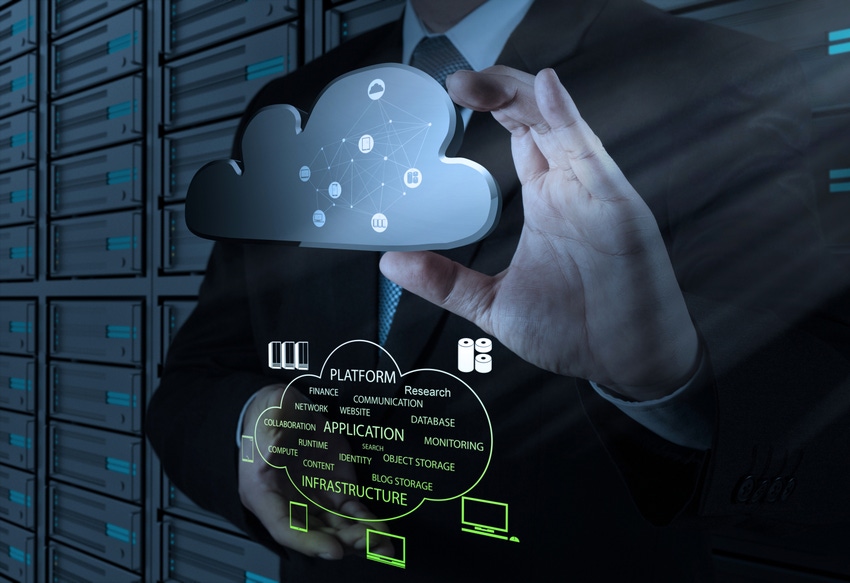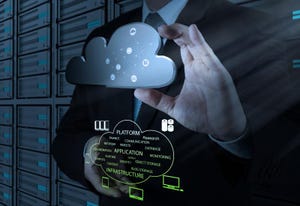A recent survey shows that companies are woefully unprepared when it comes to disaster recovery. MSPs can play a vital role in helping businesses make better DR choices.
September 5, 2014

By Accelerite Guest Blog
 Earlier this year, the Disaster Recovery Preparedness Council released its Benchmark Survey and Annual Report on disaster recovery (DR) preparedness. The survey provides many valuable insights, but, when it comes to DR readiness, the results are almost uniformly ugly. In fact, a jaw-dropping 73 percent of companies were deemed as failing (receiving grades of D or F) in terms of disaster readiness.
Earlier this year, the Disaster Recovery Preparedness Council released its Benchmark Survey and Annual Report on disaster recovery (DR) preparedness. The survey provides many valuable insights, but, when it comes to DR readiness, the results are almost uniformly ugly. In fact, a jaw-dropping 73 percent of companies were deemed as failing (receiving grades of D or F) in terms of disaster readiness.
If there is a silver lining within this study, it’s the realization that most of the shortcomings and pain points of ill-prepared businesses can be remedied by DR solutions that are currently on the market–and that are within their means (especially considering that businesses allocate, on average, 2 percent to 7 percent of their budget on DR).
MSPs will play a vital role in helping businesses make better DR choices
Many businesses are simply overwhelmed by the panoply of backup and DR choices out there–sometimes to the point of purchasing paralysis. Not only must they know their own environment and all its nuances, but they must also know how their environment might play with the different DR technologies. An MSP partner can play a pivotal role in whittling down the choices for business customers. With educated guidance from MSP partners, the breakdown from Ds and Fs to As and Bs could be quickly reversed–and improved from there.
All-in-one hybrid BDR appliance trend starts to take hold
Recently, there have been several MSPmentor posts calling attention to the momentum building toward a unified, all-in-one appliance solution that is a hybrid of local backup and cloud-based recovery. Digging further into the survey results helps articulate why this is clearly a smart move.
Let’s start by looking at the breakdown of downtime causes.
Outages and downtime hit businesses where it hurts
The leading culprits for IT service outages, according to survey respondents, are:
Software failure and network failure (50 percent)
Human error (43.5 percent)
Power failure (24 percent)
Weather (14 percent)
Monetary losses attributed to the outages (which are likely only a fraction of the total damages) ranged from thousands of dollars to more than $5 million for some larger companies. Stunningly, in the event of an outage, IT administrators found that 43 percent of the time, when trying to restore from backups and replicas, they were not recoverable.
When reviewing the outage breakdown, it seems clear that a local backup/recovery solution would most often be the ideal solution for the quickest possible recovery of applications and data. However, in the event of a larger-scale catastrophic event–such as a data center fire, storm (hurricane, tornado, etc.) or earthquake–a business’s recovery would be in serious peril if it relied solely on a local solution.
With a hybrid solution, businesses benefit from broad protection, being able to bounce back quickly from minor adverse events as well as from catastrophic, regional disasters. By leveraging cloud-based recovery as a service (RaaS) capabilities, businesses can spin up their entire environment (physical and virtual) to the cloud; that environment can then be accessed through a remote login and up and running in less than 15 minutes.
A hybrid appliance-based solution also offers the option of recovering from the backup file or creating a bootable virtual standby machine that is continuously updated with the image snapshots, for full recovery in a matter of minutes or even seconds.
Thus, with a hybrid appliance solution, businesses can be protected from:
Server crashes and software failures
Utility outages
Weather events (floods, hurricanes)
Earthquakes
Malware exploits, ransomware, etc.
Brute-force hacker attacks (DDOS, etc.)
Human errors
Compliance: Another pain point ripe for a hybrid BDR solution
The benchmark survey reveals that 65 percent of companies need to produce DR reports for things such as compliance, while 43 percent find compliance reporting overly difficult, manual, and expensive.
There is no surprise here: Compliance and auditing have long bedeviled IT folks and business leaders alike. A hybrid BDR appliance helps take the headache out of compliance activities, making auditing easier and more transparent. For instance, a best-in-class BDR appliance solution lets you verify, in a few simple clicks, that your servers and data are backed up and readily recoverable from the image. This is a feature you won’t get from most legacy backup solutions, such as tape.
IT skills and resources shortage no excuse for inadequate DR efforts
Organizations say they still frequently struggle with aggregating the skills, time and/or money to adequately plan and test their disaster recovery preparedness. The survey tells us that:
21 percent lack the right skill sets to effectively perform DR tests
18 percent claim DR testing is too expensive
26 percent report that each DR test costs between $5,000 and $50,000
An all-in-one appliance can address the above list across the board. A hybrid solution obviates the need to patch together costly, unwieldy, hard-to-test solutions, or to splurge on solutions like SAN-to-SAN and duplicated data centers that are overkill. Today’s cutting-edge hybrid solutions are not only considerably cheaper than legacy solutions, but they are also highly unified and automated so as to simplify DR deployment and management while shortening the learning curve.
An all-in-one appliance solution also makes DR testing easy–and testing is a critical component in ensuring the reliability of your disaster recovery plan. When your recovery plan relies solely on tape backup, it’s understandable why you don’t have the days of time to test out a DR plan. With a hybrid local and cloud-based solution, testing is made much easier–and cheaper–especially in terms of labor. Thanks to virtualization technologies, you can leverage the nifty cloud sandbox features of best-in-class RaaS platforms, allowing you to test changes before deploying into production and to play with various configurations and settings. This capability helps ensure IT resiliency and quality assurance–all on the relative cheap. This is also a proactive way to ensure you are not getting IT tickets down the line for deployments that went awry.
Some of the better, and still very affordable, all-in-one appliance solutions on the market provide features like deduplication and compression, which help tame data sprawl and speed up replication to the cloud, while reducing backup windows. P2V and V2P are also powerful capabilities, providing flexibility and options for backup and recovery. Again, the high degree of automation makes for a more seamless management experience–certainly more so than it would be when managing a handful, or even a dozen, discrete point solutions for backup and recovery processes.
Today’s hybrid appliance solutions also often provide flexible pricing options–such as a per-gigabyte model or subscription-based pricing–that help make the solutions even more affordable and easy to justify in the purchasing process for businesses. Front-loaded capital expenditures (CapEx) for wholesale hardware purchases that can bog down the DR purchasing process can now make way for a pay-as-you-go subscription plan that allows for a smoother operational expenditure (OpEx) procurement process.
MSPs can blaze the way to a wholesale upgrade in DR readiness
So, why is less than one in 10 organizations currently leveraging DRaaS/RaaS as part of its DR solution? While you’ve likely seen analyst reports highlighting the tremendous CAGR growth expected for this space, even without analyst input, the opportunity for growth based on the challenges facing businesses should be abundantly clear. And, when you unify local and cloud backup and recovery all together in one appliance, you’ve just cured a fair share of DR ills. For example:
Simplifying administration and reducing management load
Reducing costs
Improving reporting and visibility
Bolstering DR readiness
Decreasing IT tickets
Enhancing scalability
Through end user education on the DR choices available, MSPs are ideally poised to be the torchbearer in upgrading disaster recovery readiness for the masses, while saving businesses on dollars and headaches.
 Matt Miller is Senior Manager, Marketing Communications, at Accelerite. His experience and interests traverse cloud, cybersecurity, economics, privacy and risk management.
Matt Miller is Senior Manager, Marketing Communications, at Accelerite. His experience and interests traverse cloud, cybersecurity, economics, privacy and risk management.
You May Also Like
